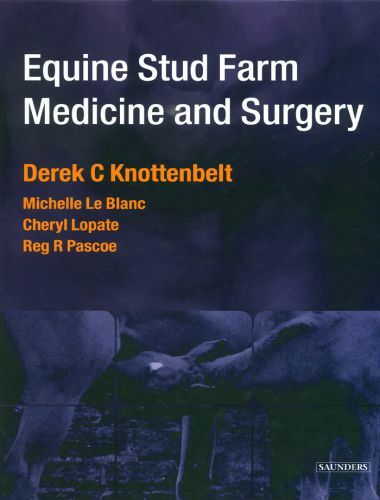Equine Stud Farm Medicine and Surgery
by

In the production of this book we set out to provide sufficient basic information for effective stud practice. We have avoided description of advanced diagnostic, medical and surgical procedures that require specialized facilities or experience.
Surgical procedures are usually adequately described in specialized surgical texts, therefore the procedures included in this book are for the most part the basic ones that form routine stud medicine practices.
We have included some flow charts which we hope will provide a useful diagnostic protocol for some of the more significant problems facing stud veterinarians. The text is referenced with limited numbers of relevant literature reports, which may provide readers with further useful information.
We hope that this book will be a useful asset to senior veterinary students and those veterinarians who are developing an interest in equine stud medicine. Furthermore, we hope that it will also be of interest to stud owners and owners of brood mares.
The first three chapters of the book are dedicated to the stud farm and routine stud procedures. We set out to provide some useful help to stud owners based upon areas where, in our experience, problems are relatively frequent. These chapters have been difficult to construct because facilities and management vary widely in different geographical and economic circumstances, but at least the general principles are often similar. Owners of stud farms may ask for veterinary input when they are designing or changing facilities and it is always important to consult widely before construction starts. Saunders Manual of Small Animal Practice PDF
Chapter 4 deals with the stallion. In spite of their importance in breeding, there remains a common impression that most stallions always perform well and always remain fertile despite less than perfect management. Without a healthy stallion, free of significant disease, fertility will inevitably suffer.
Previous breeding practices with stallion boob of up to 40-60 mares have in the case of some stallions been increased to 100-150 mares, which means that an individual stallion will have a considerable influence on the succeeding foal crop and indeed the genetic structure of female blood lines. Genetic defects and venereal infections can be significant risks if the stallion is not properly managed and prepared for the stud season.
The increasing use of chilled semen and improved artificial insemination techniques have in some instances helped overcome increasing pressures on some performance stallions not bred for racing. However, the results of artificial insemination with frozen semen in horses still lags well behind those of the ruminant species and much further research into the cryopreservation of semen needs to be undertaken to improve them. Furthermore, there are still prejudices against the use of artificial insemination in some breeds, but the perceived disadvantages are probably balanced by significant potential advantages.
Direct Link For Paid Membership: –
This Book is Available For Premium Members Only (Register Here)
Unlock 3000+ Veterinary eBooks or Go To Free Download
Available for Free Membership: –
| Buy Now : Amazon | Download Now : Click Here |
| Password : PDFLibrary.Net (If Required) | |
